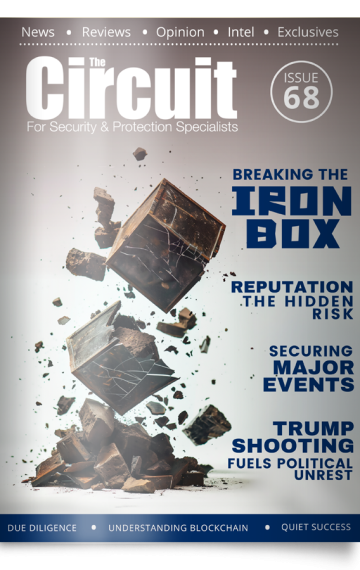Bullet proof vests are incredibly useful pieces of equipment for Security Personnel. Not only are they available in a variety of models and designs, they can protect against a wide range of ammunition.
However, far too few people understood exactly what protection a bulletproof vest can provide. For example, many Security Operatives do not realise that a bullet proof vest cannot protect against weapons like knives and needles. Moreover, a bullet proof vest may not be able to protect you against certain rounds. So what can your vest protect you against?
Body armour is available in different levels of protection according to the ammunition if can protect you against. The levels available in a bullet resistant vest are governed by the US National Institute of Justice, which is widely recognized as being the world leader in ballistics testing. The testing standards outlined by the NIJ allows for these levels- NIJ Levels- to be assigned to bullet proof vests according to the size, strength, and speed of the ammunition it can protect you against. Below are some of the most common rounds, the most popular rounds, and the most famous rounds available, and what level of body armor you will need to protect against each.
9mm Parabellum
The 9×19 mm Parabellum, commonly known as simply the ‘9mm’, was developed at the beginning of the 20th Century for German manufacturer DWM. The 9mm is credited as being the most widely used handgun ammunition in the world, and is commonly used by Police Officers across the globe. The 9mm is often cited as the reason semiautomatic pistols became more popular than revolvers. At higher velocities a Level II vest is needed, but at lower velocities a 9mm will be stopped by a Level IIa vest.
.45 ACP
The .45 ACP, or .45 Auto, was created for the prototype Colt semi-automatic .45 pistol developed by John Browning. It was first released in 1904, but only gained popularity in 1911 when it was adopted by the US Army for use in its M1911 pistol. Following this it became far more popular, thanks in part to its moderate recoil and high velocity. The .45 ACP also benefits from a low muzzle flash, but is heavy and costly to produce. Protecting against this round requires a vest at Level IIa.
10mm Auto
The 10mm Auto, usually shortened to simply ‘10mm’, was a joint design between the United States and Sweden and first introduced in 1983. Despite boasting superior stopping power, the 10mm never gained the popularity of its shorter counterpart (the .40 S&W). It did, however, gain popularity among certain branches of Law Enforcement, most notably the rescue and SWAT teams of the FBI. The 10mm was designed to be used in semi-automatic pistols, but suffers from high recoil. To stop the 10mm Auto you will need a Level IIa vest.
.40 S&W
The .40 S&W is named for its manufacturer, Smith & Wesson, and was originally designed to be used by Law Enforcement Agencies. This rimless cartridge did gain popularity among Officers after its introduction in 1990, partly due to its performance against similar rounds, offering both superior power and improved recoil. The .40 S&W was created as a shorter alternative to the 10mm Auto. Protecting against the .40 S&W will require a Level IIa bullet resistant vest.
.357 SIG
Introduced in 1994, the .357 SIG was designed by its namesake, Swiss manufacturer Sig Sauer. Apart from its reduced recoil, the .357 SIG is practically identical to the .357 Magnum in terms of performance, yet is known for being more reliable. For example, one of the benefits of the .357 SIG is its compatibility with autoloader platforms. However, the .357 SIG never gained the popularity of other similar rounds, perhaps because of its lack of adoption by Law Enforcement organisations. A Level IIa bullet proof vest is needed against this calibre of ammunition.
.357 Magnum
The .357 Magnum, or simply .357, is credited with beginning the ‘Magnum era’ of handgun ammunition after its introduction in 1934, and has found popularity worldwide. This round was developed in the 1930s by Smith & Wesson in an effort to re-establish themselves as the leading law-enforcement armament provider. The .357 is well-known for its stopping power, and is largely fired from revolvers, although it can be fired from certain semi-automatics, notably the Desert Eagle. A vest at Level II will protect against this ammunition.
.44 Magnum
The .44 Magnum is one of the most famous rounds in the world, featured most famously in the film Dirty Harry. The film is often attributed with the rise in popularity of the bullet, as it had remained relatively unknown for the 16 years previous. The .44 Magnum is famous for its stopping power, which naturally causes muzzle flash and high recoil. The .44 Magnum will
need a Level IIIa bullet proof vest.
Bullet Proof Vests How Protected Are You?
By: SafeGuard Armour

Leave a Reply